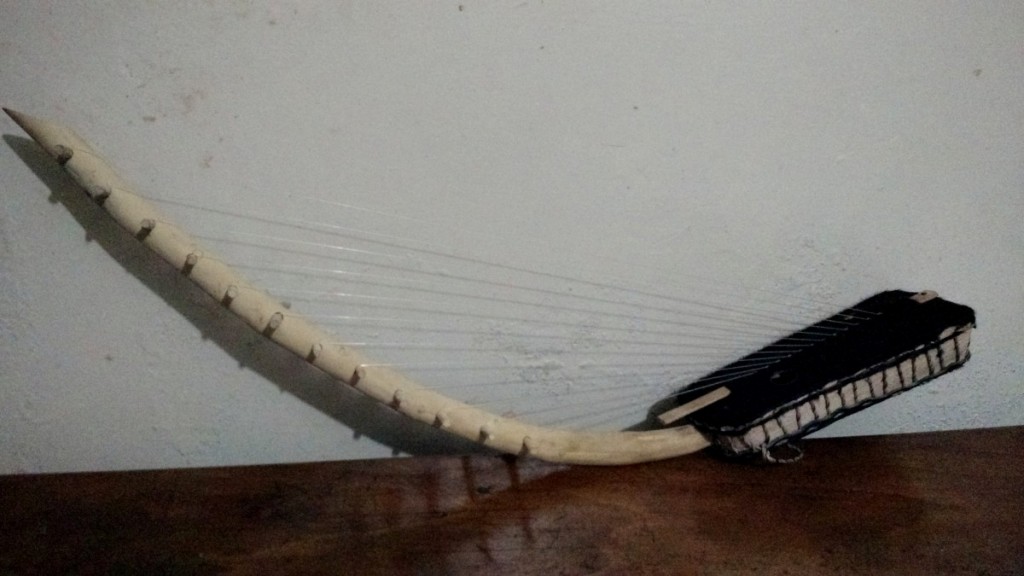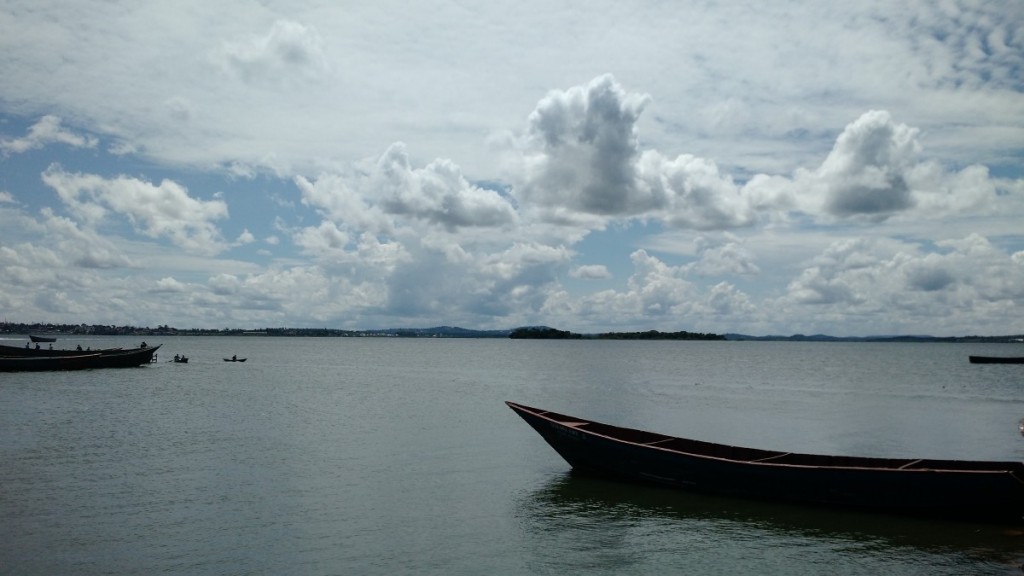This week I was fortunate enough to be able to meet with Joe Kaharimbanyi who is a member of the Ugandan band Qwela. Qwela’s music is often described as afrofusion. Joe mentioned that his influences range from Rukiga music (the Bakiga are a group from Southwestern Uganda and Rwanda), Blues, Jazz and Reggae. This diverse range of influences can be seen in their instrumentation and choice of language. Their ensemble consists of typical ‘western’ instruments such as guitars, a drum kit, saxophone and keyboard/piano alongside traditional Ugandan instruments, particularly drums.
When I asked Joe about the bands selection of instruments and language he said that they intentionally try to use instruments and languages from different regions in Uganda. Their goal in representing different cultures from around the country in their music is to try and connect with a wider audience. This aligns with the Ndere Troupe’s goal (mentioned in a previous post) of promoting unity across cultures by presenting dances and music from diverse cultures.
Here is a song from Qwela’s album Afrotopia:
Qwela – Tendeko
On Wednesday night, I made it down to the National Theater for the opening performance for and event called DOADOA. DOADOA refers to itself as the ‘East African Performing Arts Market.’ Their goal is to provide networking and educational opportunities in order to develop the performing arts community in East Africa. Unfortunately the rest of the DOADOA events were taking place in Jinja. Although Jinja isn’t too far from Kampala, I wasn’t able to make it over there. However, I was able to learn a bit more by perusing their program.
The opening performance was by Annet Nandujja. She performs music and dance that is in the style of traditional music from the Baganda people of central Uganda. She sang entirely in Luganda which is the language of the Baganda. Kampala was also historically the center of the Buganda kingdom (from which Uganda got its name). As such, it is the most widely spoken of Uganda’s languages spoken in Kampala. In my conversation with Sylvia Nannyonga-Tamusuza, she identified the use of Luganda as one of the defining characteristics of the music created in Kampala.
Although I couldn’t understand the lyrics (I have been trying to pick up a bit of Luganda while I am here but haven’t gotten very far yet), the person sitting next to me mentioned that one of the reasons she really liked Nandujja was that she is a great storyteller. This emphasis on storytelling is a component of her music that she pulls from traditional Kiganda music.
Her band consisted of an endigidi (tube fiddle), amadinda (xylophone), and the Kiganda set of drums. The Kiganda set is a group of drums that is typically used in the Kiganda music. This set of drums includes the engalabi (tall, cylindrical drum), nankasa (high pitch), embutu (middle pitch) and empuni (low pitch). She also performs with a group of dancers called The Planets. They also derive their dances from tradition Kiganda dances.
On Saturday night, I went to a restaurant called Casablanca near where I am staying. There was a distinct contrast in the types of music played there. When I first arrived the were playing a fairly typical American and European pop. However, every 20 to 30 minutes a performer would come out to play live drums accompanied by several dancers. She would play without taking a rest for about 10 minutes and then the recorded music would resume.
This week I also started learning how to play the adungu which is also known as the bow harp. The adungu originated in Northern Uganda mostly among the Alur and Acholi. It is now one of Uganda’s traditional instruments that is played in many different cultures throughout the country. The adungu seems to be one of the traditional instruments most commonly incorporated into contemporary music (I have mentioned it in previous posts as being featured in different bands).
Along with most forms of traditional music, the adungu was originally tuned in a pentatonic scale. However, along with the influence of colonialism it is now tuned to a diatonic major scale. Most adungus have 7 or more strings. The one that I have has 12 strings with the first 8 tuned to a major scale and the next 4 repeat the 5th, 4th, 3rd, and 2nd of the scale an octave lower. The adungu also comes in several different sizes ranging from the solo adungu (which has the highest pitch) to the bass adungu. I will be continuing to take lessons for the rest of my time here so I should have an update on my progress in my next post.



